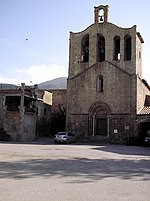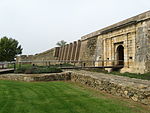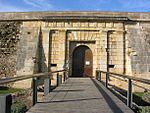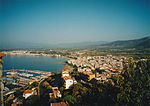Sant Pere de Rodes
Alt EmpordàBenedictine monasteries in CataloniaBuildings and structures in the Province of GironaPages with Catalan IPARomanesque architecture in Catalonia

Sant Pere de Rodes (Catalan pronunciation: [ˈsam ˈpeɾə ðə ˈrɔðəs]) is a former Benedictine monastery in the comarca of Alt Empordà, in the North East of Catalonia, Spain.
Excerpt from the Wikipedia article Sant Pere de Rodes (License: CC BY-SA 3.0, Authors, Images).Sant Pere de Rodes
Camí del Monestir,
Geographical coordinates (GPS) Address External links Nearby Places Show on map
Geographical coordinates (GPS)
| Latitude | Longitude |
|---|---|
| N 42.323611111111 ° | E 3.1666666666667 ° |
Address
Monestir de Sant Pere de Rodes
Camí del Monestir
17495
Catalonia, Spain
Open on Google Maps











